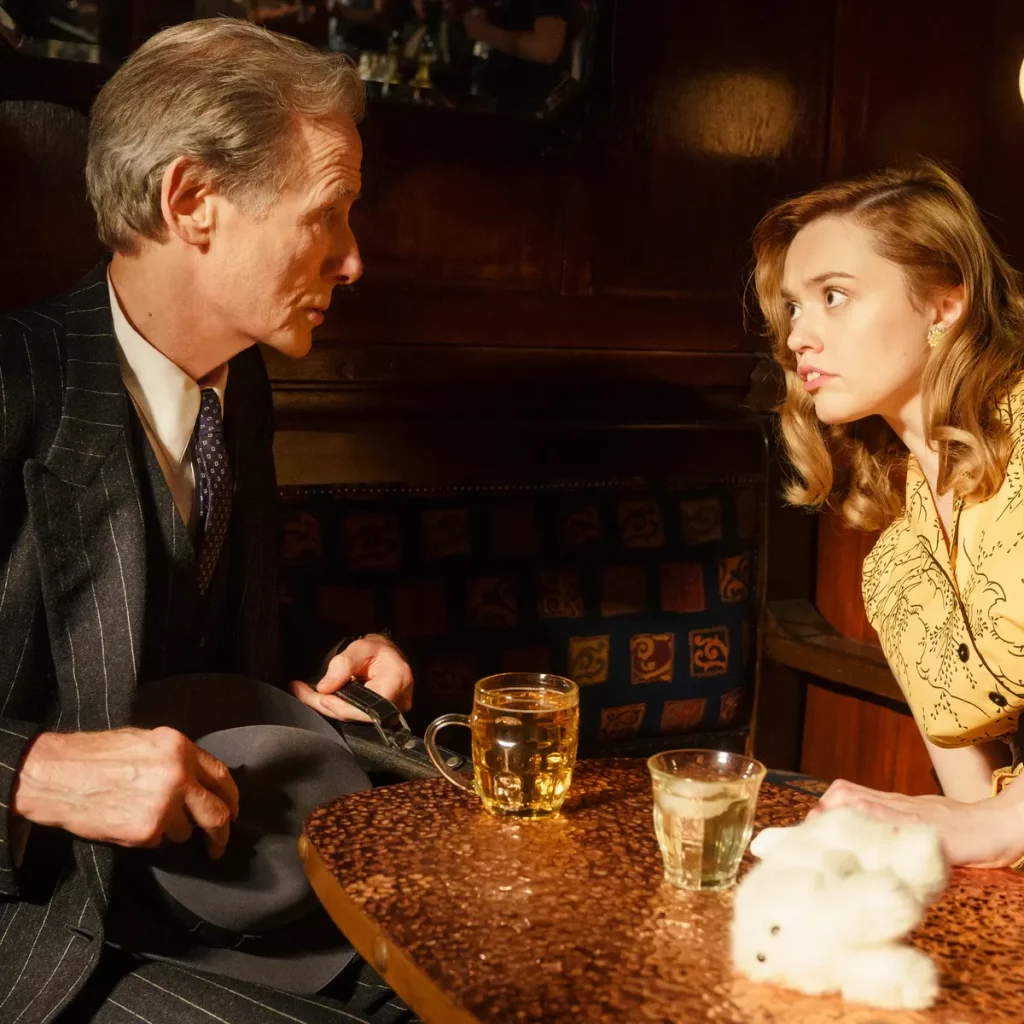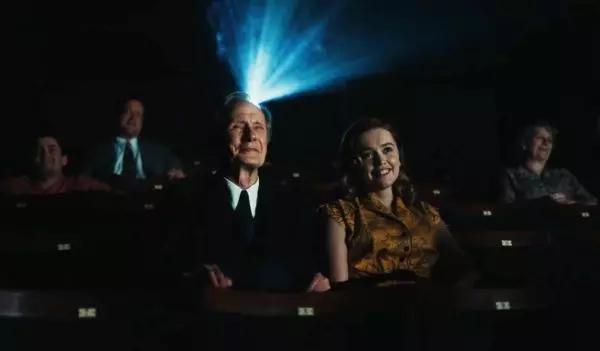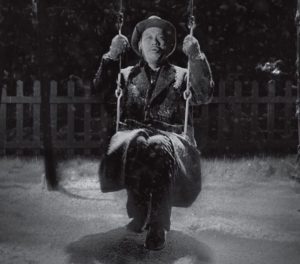Warning: Spoilers ahead
“What are things you’d like to do before you die?” A common question we’ve all heard countless times, but it begs a complicated answer. Some people have a bucket list, others have one or two goals, or some just want to survive. In Living, the protagonist Mr. Williams, played by Bill Nighy (Love Actually, Page 8, About Time) is one of those who wants to survive. The real question throughout the film is: “What does it really mean to live?” The answer is weaved throughout and turns out this answer is less complicated than a long bucket list.
As described in a variety article, Nobel Prize-winning novelist Kazuo Ishiguro one day approached Bill Nighy on playing the lead role in a screenplay he was writing based on Akira Kurosawa’s film Ikiru (meaning “To Live”). This time, Ishiguro wanted the story to be in Britain, post World War II. Directed by Oliver Hermanus (Beauty, Shirley Adams), the film is in the same vein as Kurosawa’s, but the most interesting contrast between the classic and this new film, are the cultural differences and how those can shape our perception of living in the world.

(Bill Nighy as Mr. Williams and Aimee Lou Wood as Ms. Margaret Harris)
Similar to Kurosawa’s, our protagonist Mr. Williams is a run-down public servant who works day in and day out at the same Public Works department at City Hall and has been doing so for several decades. Characteristically, the film shows how working men primarily in London went about their day-to-day lives during the early 1950’s.
To jolt Mr. Williams out of his mundane life, he is given a fatal diagnosis, and only has a limited time to live. Having a stark realization that he hasn’t done much “living” in his life, he makes a getaway to the seashore in southeastern England and meets a writer called Mr. Sutherland. Opposites attract, and the fun-loving Mr. Sutherland helps Mr. Williams to enjoy life a little more.
After his excursion to the southern coast, Mr. Williams is still unsatisfied, and makes his way back to London for an awakening. He bumps into Ms. Margaret Harris, a colleague of his, who seemingly embraces the joy of life and brings warmth to those around her. This film does show some of the struggles for women during this period through Ms. Harris’ struggle to be recognized for her working potential. Recognizing this, Williams writes her a glowing professional review and encourages her further throughout the film.
 (Bill Nighy as Mr. Williams and Aimee Lou Wood as Ms. Margaret Harris)
(Bill Nighy as Mr. Williams and Aimee Lou Wood as Ms. Margaret Harris)
Eventually, Ms. Harris starts feeling uncomfortable with their growing closeness and questions Mr. Williams’ intentions. Our protagonist is forced into an awkward situation and decides it’s best to make Ms. Harris his confidante. Ms. Harris is overwhelmed with compassion for Mr. Williams in hearing the news of his terminal illness. An idea hits him at this moment. It’s almost as if he always had the answer he was looking for. He leaves Ms. Harris, while also leaving the audience in anticipation of what he embarks on next.
The timeline of the narrative abruptly comes to the ending we are dreading: Mr. Williams’ death. At first, this is anti-climactic, since we didn’t see Mr. Williams’ idea, when leaving Ms. Harris, come to fruition. This is a narrative device that Kurosawa used as well in his original film, Ikiru, and in Living it works beautifully.
Just as the other characters who are mystified by his death and how much Mr. Williams knew about his own demise, we are also mystified by what he actually did before his death. The audience is in the dark about one part of the narrative, while as the characters, are in the dark about what we already knew about Mr. Williams. But, they reveal the events that we haven’t seen yet.
They reveal that ultimately Williams found purpose outside of his own life, by bringing some joy to others. Determined beyond measure, they narrate in flashbacks how Williams fought through all the bureaucracy of the public works department to accomplish something. Williams becomes the hero he set out to be and brought genuine happiness to himself and others. He eventually creates the playground and park he intended to create for the children in the local community. The ending shows a single swing empty, but it swings back and forth, indicating that Williams’ spirit still lives on in the park he helped to build.
As much as it’s a deeply reflective film, it doesn’t touch upon the diverse population in London at the time. If characters from different diverse backgrounds were introduced, it might’ve been an interesting contrast to Mr. Williams’ life and those around him. It would shine some light on what it meant to live a meaningful life. Afterall, the filmmakers’ focus stays true to Kurosawa’s original work, which mainly tells the perspective of a man and his discovery about life.

(Takashi Shimura as Kanji Watanabe in Kurosawa’s Ikiru)
Despite this lack of diversity, the story holds the same beauty in its themes to Kurosawa’s Ikiru. The interesting component of Living is the cultural difference in the British outlook on life versus the Japanese in Ikiru. Famously, the British “stiff upper lip” is prevalent in Living and an attitude of keeping one’s feelings to oneself. Ikiru shows a different response to death and grief. The protagonist, Mr. Kanji Watanabe, feels his death sentence is something to be ashamed of. When he tells only a couple of others, they show discomfort towards Mr. Watanabe rather than sympathy. While as in Living, Mr. Williams doesn’t want to “burden” others with his terminal diagnosis. The attitude towards death is negative of course, but how it’s processed in each culture is different.
Even so, the similarities in both Ikiru and Living are the most interesting to see. Even if our perception is molded by our culture, when it comes down to it, we all want meaningful lives. The similarities show our shared humanity when facing death.
We only have one life, and so the common question we should really be asking is: “When are you going to start living your life with purpose?”



 (Bill Nighy as Mr. Williams and Aimee Lou Wood as Ms. Margaret Harris)
(Bill Nighy as Mr. Williams and Aimee Lou Wood as Ms. Margaret Harris)




